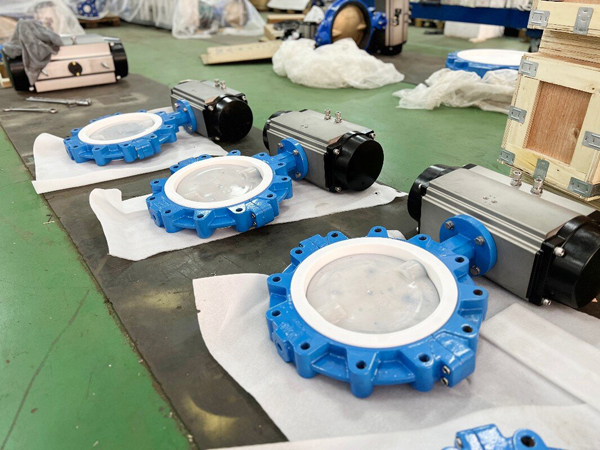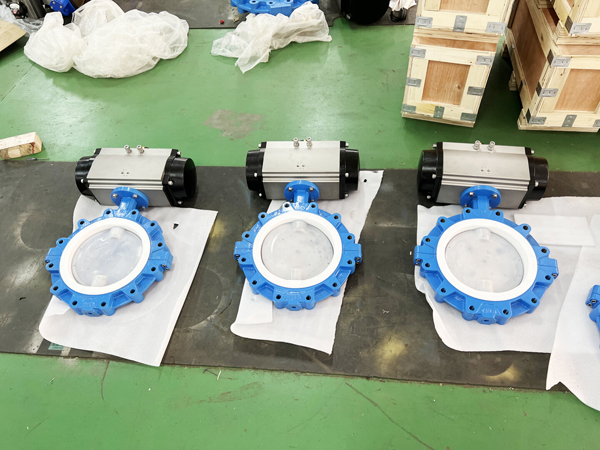Duckbill valves are uniquely designed, flexible, and efficient solutions for ensuring unidirectional flow in various systems. This blog explains their structure, function, and role as a duckbill one way valve and a duckbill valve and check valve, detailing how their elastomeric material prevents backflow with precision. We also explore the versatility of duckbill valves?across industries like healthcare, wastewater management, and industrial applications. Emphasizing their low-maintenance design and effectiveness in harsh environments.
Learn how these duckbill non return valves outperform other check valves, their selection criteria, and how to maximize their lifespan. Discover why investing in a high-quality duck bill valve is integral for reliable and cost-effective fluid management. Explore the full article for in-depth insights!

Introduction
Duckbill valves are highly efficient, flexible components known for their ability to ensure unidirectional flow in fluid systems. Their unique design, resembling the shape of a duck’s bill, allows them to function seamlessly as a “duckbill one way valve” and a “duckbill valve and check valve.” Made from durable elastomeric materials, these valves prevent backflow by automatically sealing under reverse pressure. Offering reliable and maintenance-free performance across various applications. From medical devices to wastewater management systems and complex industrial pipelines, duckbill valves play a critical role in controlling the flow of liquids, gases, and other media.
Their design not only eliminates the need for moving parts but also provides exceptional resistance to corrosion and harsh environments. Making them an ideal choice for demanding conditions. Whether utilized as a “duckbill non return valve” in drainage systems or as a versatile “duck bill valve” in healthcare equipment, these valves are instrumental in ensuring efficient, cost-effective, and long-lasting fluid management solutions across numerous industries.
1. What is a Duckbill Valve?
A duckbill valve is characterized by its distinctive shape, resembling a duck’s bill. Which is both functional and efficient in managing fluid flow. The valve’s structure consists of a narrow slit at one end that widens toward the base, creating a unidirectional fluid path. When pressure is applied from the upstream side, the slit opens to allow flow. Once the pressure stops or reverses, the slit closes tightly due to the elasticity of the material, preventing backflow. This simple design eliminates the need for mechanical moving parts. Ensuring reliable performance with minimal maintenance.
Duckbill valves are typically crafted from high-quality elastomers or rubber, materials chosen for their superior flexibility, durability, and resistance to wear. Elastomers, in particular, allow the valve to withstand varying pressure levels and ensure a tight seal under low or high flow conditions. Rubber’s natural resilience adds to the valve’s capability to endure harsh environments, including exposure to chemicals, abrasives, and extreme temperatures. These material properties make the “duckbill valve” a trusted component for industries ranging from healthcare to wastewater management. Acting as a “duckbill one way valve” or a “duckbill non return valve”, its performance stands out in critical applications requiring the prevention of backflow or contamination.

Furthermore, as a type of “duckbill valve and check valve,” its streamlined design significantly reduces the risk of clogging and ensures consistent flow. Even in challenging conditions. The combination of advanced materials and innovative design makes the “duck bill valve” a robust choice for fluid control systems worldwide.
2. How Does a Duckbill Valve Function?
A duckbill valve operates through a straightforward yet highly effective mechanism designed to ensure unidirectional flow. The process begins when fluid pressure is applied to the inlet side of the valve. This pressure causes the narrow, flexible slit at the tapered end of the valve to open. Allowing the fluid to pass freely. The unique, duckbill-shaped design ensures that the opening happens gradually and evenly. Minimizing turbulence and maintaining a smooth flow.
When the forward pressure subsides or reverses, the valve automatically closes due to the inherent elasticity of the elastomer or rubber materials used in its construction. These materials are highly flexible, enabling the slit to seal tightly and prevent any backflow of fluid. The absence of moving parts in this “duckbill valve and check valve” design reduces wear and tear. Contributing to its long lifespan and reliable performance.
Whether functioning as a “duckbill one way valve” in medical equipment or a “duckbill non return valve” in drainage systems, the valve’s streamlined structure ensures it responds to pressure changes instantly. The durable materials further resist damage from harsh chemicals, abrasives, or extreme temperatures. Maintaining the valve’s efficiency in challenging conditions. Its ability to open and close seamlessly not only ensures unidirectional flow but also prevents contamination or clogging. This makes the “duck bill valve” an indispensable solution for industries requiring precision and durability in fluid control systems.
3. Applications of Duckbill Valves
Duckbill valves are widely utilized across multiple industries due to their durability, efficiency, and ability to ensure unidirectional flow. In the medical sector, these valves play a critical role in devices like ventilators, respiratory equipment, and intravenous systems. Where maintaining sterile, contamination-free fluid or air flow is vital. The flexibility of the materials, coupled with the “duckbill one way valve” design, ensures precision and reliability in these highly regulated applications.
Meanwhile, in wastewater management, duckbill valves are used in drainage systems to prevent backflow and contamination. Their seamless operation, even in systems exposed to debris and harsh substances, makes them an ideal solution for managing sewage and stormwater.
Similarly, in industrial settings, duckbill valve and check valve components are commonly integrated into chemical plants, petrochemical pipelines, and food processing systems. The robust construction of these valves, often from elastomers or rubber, resists wear from corrosive chemicals, high pressures, or extreme temperatures. Functioning as a “duckbill non return valve”, they protect critical equipment and ensure operational continuity by eliminating backflow risks. Overall, the “duck bill valve” delivers reliability, adaptability, and cost-efficient performance in industries demanding high-quality fluid management solutions.

4. Duckbill Valve vs. Other Check Valves
Duckbill valves stand apart from other types of check valves, such as swing and ball valves, due to their innovative design and unique functionality. Unlike swing valves, which use a hinged disc to control flow, or ball valves, which rely on a rotating ball or sphere, duckbill valves feature a flexible, elastomeric body with a narrow slit that opens and closes depending on fluid pressure. A primary advantage of the “duckbill one way valve” is its ability to prevent backflow without the need for mechanical components. Which reduces wear and maintenance. Additionally, the streamlined “duckbill valve and check valve” design minimizes the risk of clogging, even when exposed to debris or viscous fluids. This makes the “duckbill valve” particularly advantageous in wastewater and industrial applications. Where other valves may require frequent cleaning or servicing.
Other Check Valves
Swing and ball valves, while effective for certain tasks, often encounter limitations in environments with high particulate matter or in systems requiring low-pressure sealing. Swing valves, for instance, can struggle to maintain a tight seal at lower pressures and may require additional components to enhance performance. Ball valves, on the other hand, tend to be heavier and bulkier, with mechanisms that may degrade over time due to repeated use or exposure to corrosive materials. Conversely, the “duckbill non return valve” is lightweight, corrosion-resistant, and capable of handling harsh environments with ease. Its elastomer or rubber construction allows it to operate seamlessly across a wide range of pressures and flow rates without compromising its durability or efficiency.
The “duck bill valve” excels in applications where maintenance downtime must be minimized, and reliability is critical. This positions it as a preferred choice in sectors like healthcare, wastewater management, and food processing. While swing and ball valves may be more suited to applications requiring manual control or higher-pressure systems. Overall, the duckbill valve’s combination of simplicity, adaptability, and low-cost maintenance makes it a standout solution in the realm of fluid control.
5. Key Benefits of Duckbill Valves
Cost-Effectiveness:
Duckbill valves are designed with simplicity in mind, utilizing durable materials such as elastomer or rubber. This eliminates the need for intricate mechanisms or frequent maintenance. Reducing both initial costs and ongoing expenses. Their long operational lifespan further enhances their cost-efficiency, making the “duckbill valve” ideal for industries managing tight budgets or requiring large-scale installations.
High Performance in Harsh Environments:
The robust construction of the “duckbill one way valve” allows it to operate reliably in extreme conditions. Whether exposed to corrosive chemicals, varying temperatures, or systems with significant debris, these valves maintain performance without degradation. The flexible materials resist wear, ensuring a high level of durability in wastewater management, chemical processing, and industrial systems.

Reliable Prevention of Backflow:
The unique design of the “duckbill valve and check valve” ensures a tight seal under reverse pressure, completely preventing backflow. This capability is critical in applications where contamination or system failure could have significant consequences. Such as in healthcare, food processing, or drainage systems. Thanks to their streamlined mechanism, “duckbill non return valves” excel in maintaining unidirectional flow across a variety of fluid control applications.
Maintenance-Free Design:
Unlike traditional valves with moving parts, the “duck bill valve” has an inherently low risk of mechanical failure. Its adaptive, self-sealing structure minimizes clogging and eliminates the need for regular servicing, resulting in higher uptime and reduced operational disruptions. This makes it a top choice for industries prioritizing reliability and continuity in their processes.
FAQ
1. What is the purpose of a duckbill valve?
A duckbill valve is a one-way check valve used to control the flow of fluids. Its unique, flexible design allows fluids to flow in a single direction while preventing backflow. This ensures a reliable, leak-free seal even under varying pressure conditions.
2. Where are duckbill valves commonly used?
Duckbill valves are widely utilised across industries including medical devices, wastewater management, marine systems, and industrial fluid control. Their ability to handle diverse liquids and pressures makes them suitable for applications such as drainage systems, non-return medical equipment, and chemical processing.
3. Can duckbill valves be customised for specific applications?
Yes, duckbill valves can be customised based on material, size, and flow specifications to meet particular operational requirements. Our team works closely with clients to provide tailored solutions for unique system needs.

4. How do I maintain a duckbill valve for optimal performance?
Duckbill valves are low-maintenance components. However, regular inspections to monitor wear and tear, ensuring the valve remains free of debris, and replacing it as per the manufacturer’s recommendations will help maintain its efficiency and longevity.
5. How long does it take to deliver a duckbill valve order?
Delivery time varies depending on order specifications, quantity, and customisation requirements. Standard models are often available for immediate dispatch. While customised valves may require 2-4 weeks for design and production. Please contact us for a precise delivery estimate based on your requirements.
Conclusion
A duckbill valve is an essential component in fluid control systems, delivering unmatched reliability and performance across a variety of applications. At its core, the function of a duckbill valve is to ensure unidirectional flow while effectively preventing backflow. Its distinctive design, resembling a duck’s bill, allows it to flexibly open and close in response to pressure changes. This unique mechanism eliminates the need for complex mechanical parts, ensuring seamless operation and reducing the likelihood of breakdowns. By maintaining unidirectional flow with precision, the “duckbill valve” protects critical systems from contamination, inefficiency, or damage caused by backward flow.
Constructed from durable and flexible materials like elastomers or rubber, the “duckbill one way valve” is highly adaptable to demanding environments. Whether dealing with corrosive chemicals, high temperatures, or systems prone to debris buildup, the valve’s material composition enhances its resistance to wear and tear. This durability ensures long service life and minimal maintenance, making the “duckbill valve” an ideal choice for industries focused on operational efficiency and cost savings. From preventing backflow in wastewater management systems to maintaining sterile conditions in medical devices, its versatility knows no bounds.

